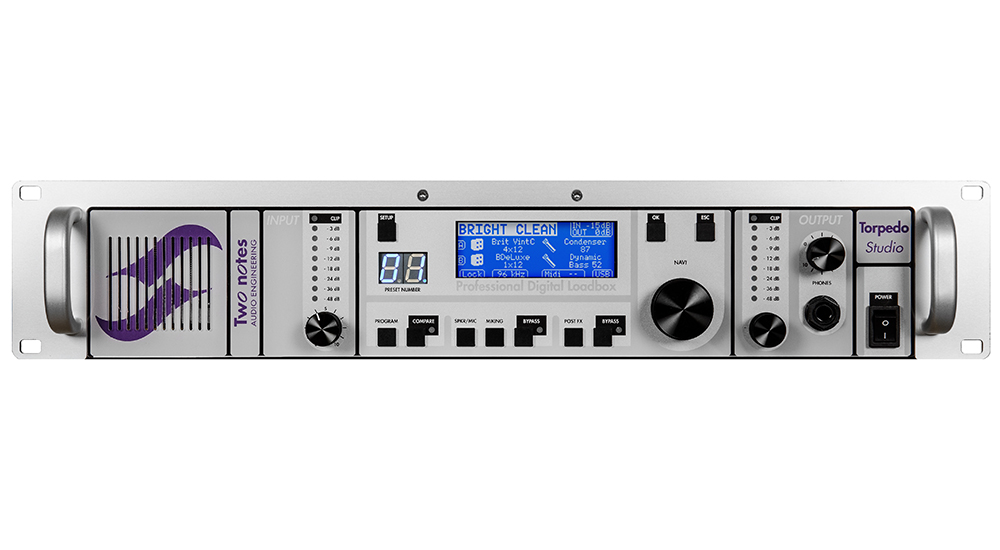It’s a load box with an adjustable impedance of four, eight or 16 ohms that can take up to 150 watts of amp punishment: it tricks your amp into ‘seeing’ a speaker cabinet so it responds in just the right way. It has 50 inbuilt cabs, eight power amps, eight mics, 32 bit processing at 96kHz resolution, and is MIDI programmable so you can integrate it with a complex rig, or program preset-changes within your song files, if your band uses a laptop for additional backing tracks and sequencing.
In terms of cabinet emulation, Torpedo Studio simulates two cabinets and two microphones, so you can perform neat tricks like place two virtual mics on one virtual speaker, or two mics on two cabs. These signals can be sent to stereo outputs. There are also post-mic effects including a semi-parametric EQ, an exciter, compressor and reverb, giving you a mastered, fully audience-ready sound right from your amp rig.
I used the Torpedo Studio with my Marshall DSL50, an amp I’m very familiar with after over a decade of use. I play it through various cabinets and a Mesa Cab Clone, a passive load box with tone shaping, which I guess you could consider a competitor to the Torpedo Studio. But Torpedo Studio gives you infinitely more control over your sound compared to the Cab Clone, letting you switch mics and cabinets from song to song or section to section, and because it’s rack-mountable it feels less fiddly if you need to transport your gear a lot. It’s the ideal companion for a beloved amp head or preamp, and because cabinet emulation is its entire reason for being, it feels more nuanced and lifelike than the cabinet emulation in typical digital processors.
If you record or perform with tube amps but you’re put off by the volume, weight and impracticalities in certain situations, Torpedo Studio is an investment in your sound and sanity.

